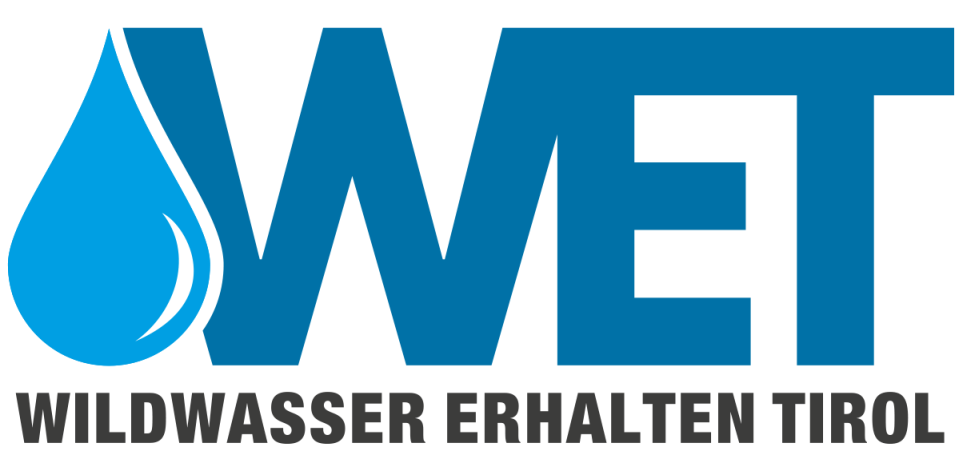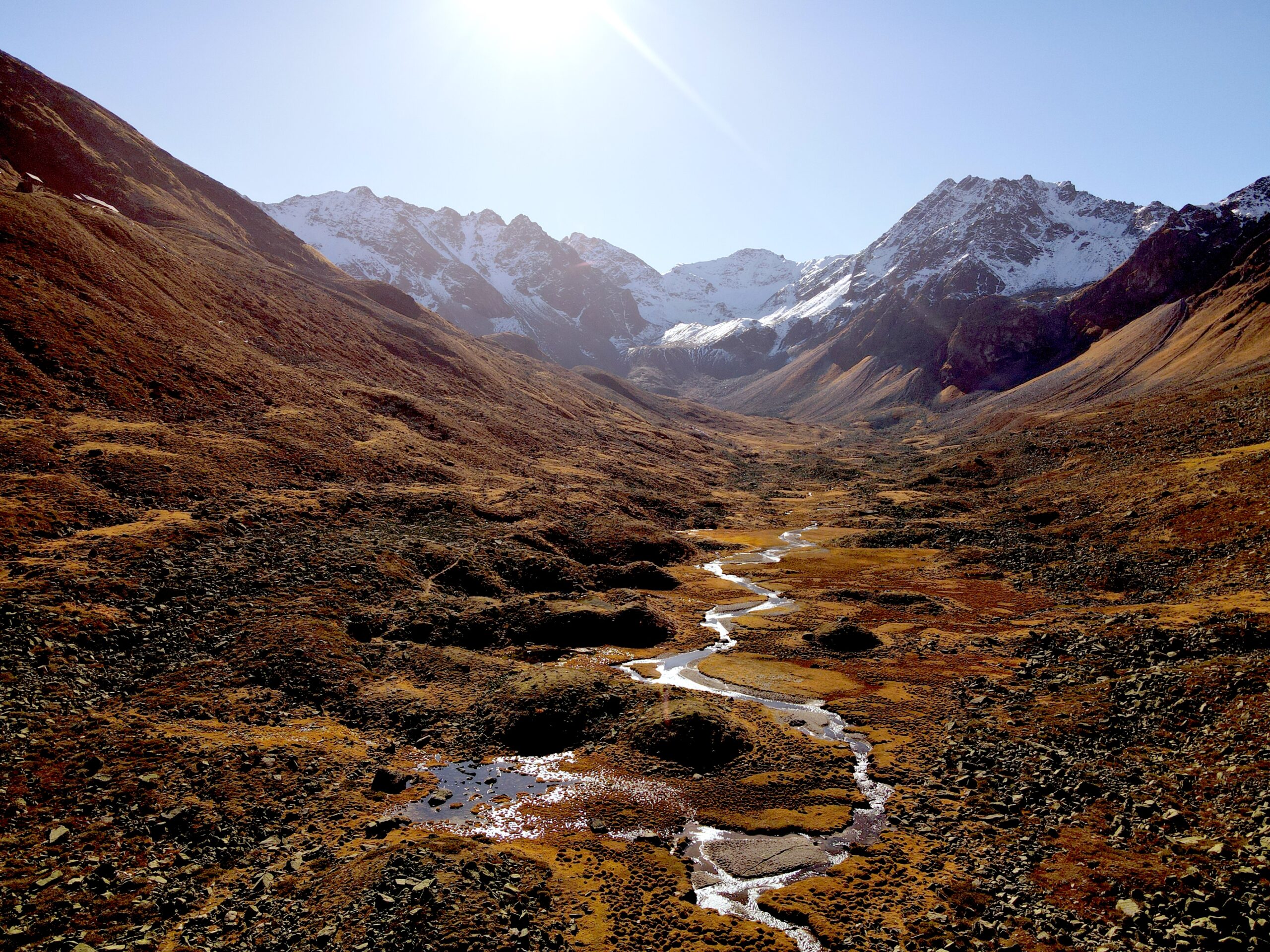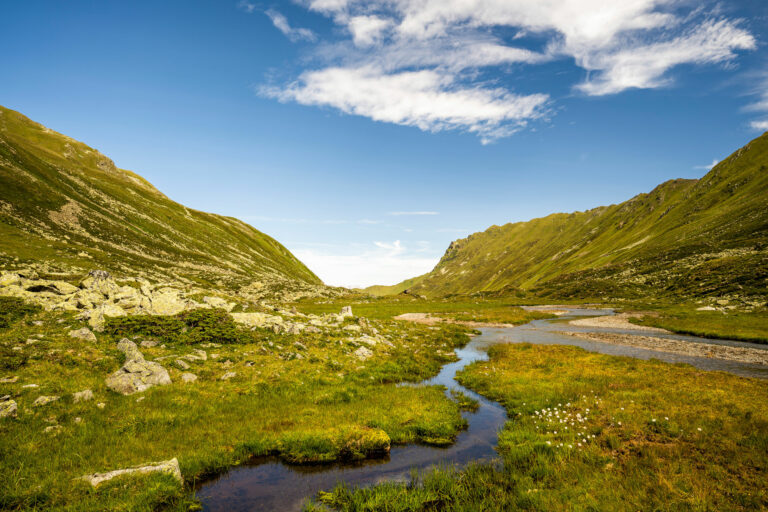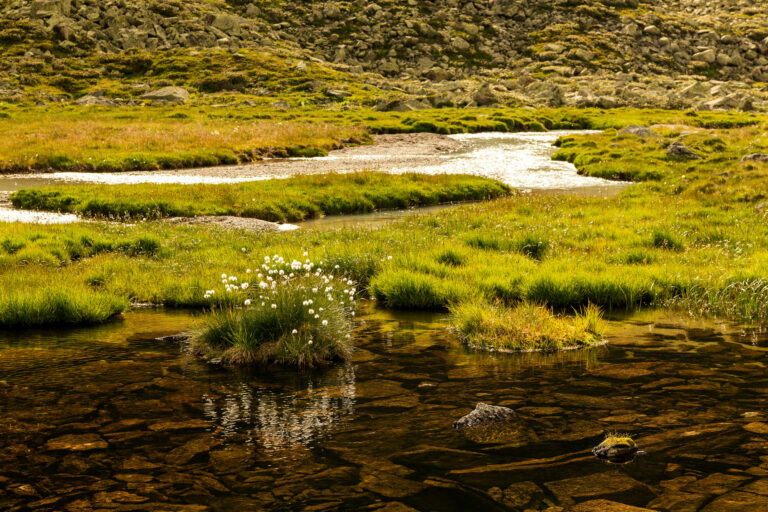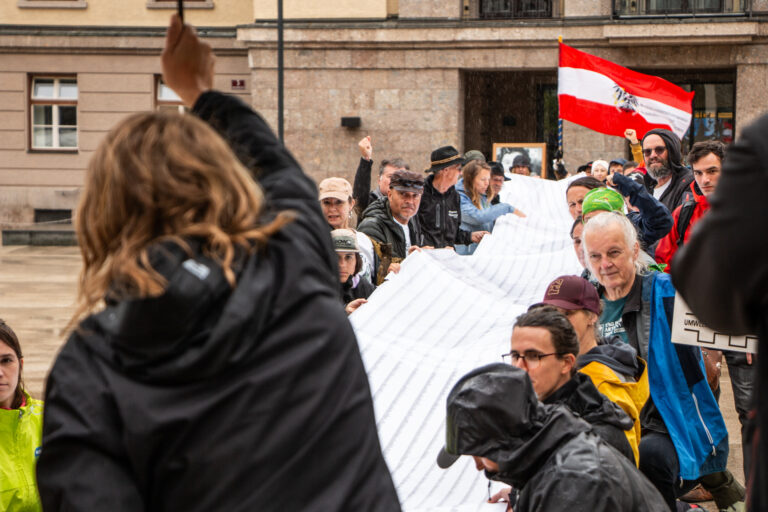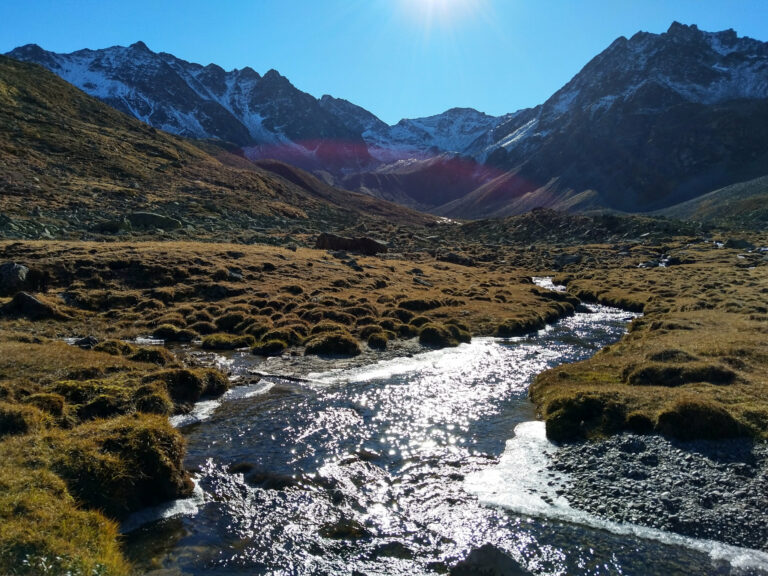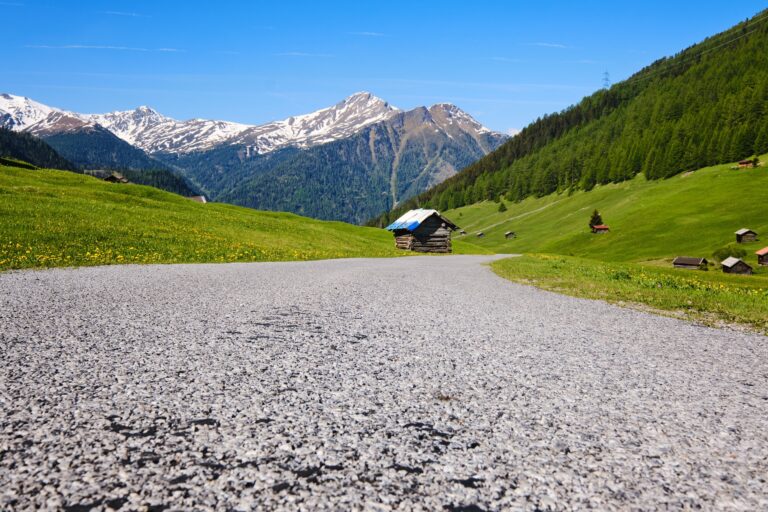Impact of Climate Change on Hydropower in the Alps, Austria & Tyrol
In recent years, the drastic impacts of climate change on various regions worldwide have become increasingly evident. In the Alps, climate warming has led to a significant reduction in glaciers and snow, loss of permafrost, increased risk of natural hazards, shifting ecosystems, as well as precipitation extremes and drought periods. In this blog post, we will explore the effects of climate change on the water cycle and its resulting consequences for hydropower in Austria, with a particular focus on Tyrol and the Ötztal Valley.
Electricity production from hydropower primarily depends on the reliability and quantity of water in rivers (7, p. 128). In the Alps, the flow dynamics and water cycle are significantly influenced not only by rainfall but also by snow and glacier melt. The portion of flow resulting from glacier melt is referred to as “glacier runoff” (2, p. 29).
Hydropower generates the most electricity during the summer months when rivers carry a lot of water. However, the distribution of annual runoff varies depending on the altitude. While the months with the highest runoff in lowland areas occur early in the spring, the peak runoff in higher altitudes occurs later. In higher elevations, the peak runoff of watercourses falls in the summer months due to ice and snow melt (4, p. 482). The extent of glacierization in the watershed area of watercourses determines the significance of ice melt for these watercourses. For example, the catchment area of the Ötztaler Ache, measured at the Huben gauge, is 17% glacierized, and the proportion of ice melt here is nearly 27%. Further downstream on the Inn in Innsbruck, the proportion of glacier area in the catchment area is only 4% overall, and the proportion of ice melt in the total runoff is also only about 8% (see table). The amount of melting glacier ice in a river’s catchment area determines the amount of “summer contribution” it receives at present. Therefore, it makes a significant difference whether we consider the effects of climate change on a mountain river or the Danube – and also when we consider it.
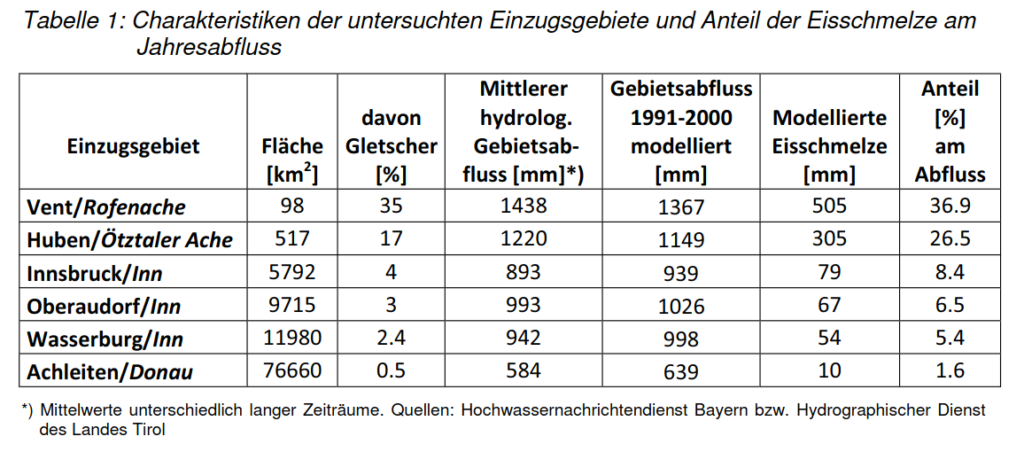
How does precipitation and runoff change in the Alps with climate change?
According to Geosphere Austria, precipitation in the Alps tends to shift from summer to winter, while remaining roughly constant over the course of a year and across the entire Alpine region. TIWAG projects a total increase in precipitation for Tyrol in the period 2071-2100 of around 5% (combining winter and summer) (+2.3°C scenario) (9, p. 14). However, according to Geosphere Austria, an increase in precipitation of about 7% per degree of warming is needed to offset the temperature-induced higher evaporation and maintain the water cycle in its current balance – approximately 16% more in this case. Therefore, roughly constant or slightly increasing precipitation does not necessarily mean that runoff will remain the same. In any case, it is clear that water availability in the summer will decrease due to overall decreasing precipitation, longer dry periods, and higher evaporation.
Increases in temperature lead to less frequent winter low-water periods due to earlier snowmelt and tendentially increasing winter precipitation, and more frequent summer low-water periods due to dry spells (6, p. 27). For hydropower, this could mean more electricity production in winter than before. However, whether this can offset the expected decrease in summer is highly questionable – we will examine this further below in the text.
Tirol’s Glacial “Bonus”
At present, rivers in Tirol with glaciers in their catchment areas receive water in the summer from glacier melt. If glaciers melt completely due to ongoing warming, rivers will no longer receive these glacier contributions during dry midsummer periods. Then, runoff will predominantly depend on increasingly fluctuating precipitation (2, p. 30), especially rain (5, p. 324). However, due to the tendency for summer precipitation to decrease, precipitation-induced runoff in summer will also decrease (1, p. 36).
For example, in summer 2022, Der Standard reported that Austrian hydropower production in July ’22 decreased by 31% due to the prolonged heat and dry spells (12). Nevertheless, Tyrol remained the leader in Austria in terms of electricity generation, with “only” a 22% decrease compared to the previous month. In contrast, Vienna and Lower Austria had to import a significant amount of electricity. Thus, at present, snow and glacier melt in Tyrol seem to mitigate much of the summer dryness.
For the coming decades (2021 to 2050), an increase in runoff in alpine rivers in general is predicted due to the decline of glaciers and glacier melt resulting from rising temperatures. This leads to more favorable conditions for hydropower generation, as hydroelectric power plants initially benefit from the higher runoff caused by glacier melt (2, p. 32). The forecasts for when the maximum increase in hydropower generation due to glacier contributions will be reached in Austria vary depending on the source, ranging from 2040-2050 (1, p. 36) to 2050-2070 (2, p. 33).
For the Ötztal, a study calculated minimal increases in summer runoff for the first modeled climate period (2010-2039) at the Vent (Venter Ache) and Obergurgl (Gurgler Ache) gauges, as well as very small increases in winter runoff and significant decreases in summer runoff for the second and third periods (10, p. 31). Although a stronger increase in spring runoff was calculated for the Huben gauge, there were also more pronounced decreases in summer runoff. The exact impact of the climate crisis will need to be evaluated individually for each catchment area.
For the Ötztal, the results suggest that the “increased glacier runoff” in the coming years and the “shift of precipitation to winter” will not be sufficient to offset the future decrease in overall river water (5, p. 327).
After the complete melting of glaciers, the additional glacier contributions will cease, and hydropower generation will decline (5, p. 327). Additionally, there will be a decrease in snowmelt due to less snow availability. As a result, runoff will be mainly dominated by rainfall (5, p. 323f). However, the predicted decrease in runoff during the summer half-year due to reduced precipitation, higher evaporation, and earlier and reduced snowmelt (2, p. 32) will lead to a decrease in hydropower generation during the summer (1, p. 38). Moreover, there is a risk of falling below the critical minimum flow required for hydropower management (2, p. 33).
Other Climate Change Impacts on Hydropwer
Hydropower is directly dependent on river runoff. It is clear that climate change leads to changes in the quantity and temporal distribution of runoff, affecting energy generation and posing long-term challenges for hydropower (7, p. 128-129). Additional consequences of climate change related to the ongoing retreat of glaciers and permafrost include increased loosening of rock material (2, p. 34) and an increase in sediment transport potential (1, p. 36). The loss of stability in rock due to ice melting can result in more frequent and larger gravitational mass movements such as rockfalls, rockslides, or debris flows. The input of solids and mobilized rock material into water bodies during extreme events can cause flow obstructions and transport and deposition of material in reservoirs (2, p. 34/35 / 6, p. 21). This can lead to operational restrictions or damage to power plants (7, p. 128-129). Consequently, the effort for maintenance and protection measures at hydropower plants as well as the safeguarding of infrastructure increases (2, p. 36).
The topic of hydropower and climate change is complex and far from exhaustively covered here. However, the scenarios clearly indicate hotter and drier summers in the future across Austria, including in Tyrol. In the future, we will urgently need our water for everything else but electricity production. It raises the question of whether, in the midst of the climate crisis and amid constantly changing forecasts, one should continue to focus so singularly on electricity production in Tyrol.
Sources & Links
- Bundesministerium für Land- und Forstwirtschaft, Umwelt und Wasserwirtschaft (2017): Die österreichische Strategie zur Anpassung an den Klimawandel. Teil 1 – Kontext. – Wien.
- Climate Change Centre Austria (CCCA) (2023): Klimastatusbericht Österreich 2022. – Wien.
- Lieb, G.K. & Kellerer-Pirklbauer, A. (2023): Gletscherbericht 2021/22. – In: Bergauf, 78(2), 10-21).
- Lebiedzinski, K. & Fürst, J. (2018): Entwicklung der alpinen Abflussregime in Österreich im Zeitraum 1961–2010. – In: Österr Wasser- und Abfallw, 70, 474–484.
- Koch, F., Bach, H., Prasch, M., Weber, M., Braun, L. & Mauser, W. (2011): Klimawandel und Energie – Einfluss der Schnee- und Gletscherschmelze auf die Wasserkraft im Einzugsgebiet der Oberen Donau. – In: Korrespondenz Wasserwirtschaft, 4(6), 319-328.
- Bundesministerium für Land- und Forstwirtschaft, Umwelt und Wasserwirtschaft & Österreichischer Wasser- und Abfallwirtschaftsverband (ÖWAV) (2008): Auswirkungen des Klimawandels auf die österreichische Wasserwirtschaft. – Wien, 204 S.
- Hauenstein, W. (2009): Wasserkraft und Klimawandel. – In: Wasser, Energie, Luft, 101(2), 127-132.
- IPCC (2022): Climate Change 2022: Impacts, Adaptation and Vulnerability. Contribution of Working Group II to the Sixth Assessment Report of the Intergovernmental Panel on Climate Change. – Pörtner, H.-O., Roberts, D.C., Tignor, M., Poloczanska, E.S., Mintenbeck, K., Alegría, A., Craig, M., Langsdorf, S., Löschke, S., Möller, V., Okem, A. & Rama B. (Hrsg.). Cambridge University Press. Cambridge University Press, Cambridge, UK and New York, NY, USA, 3056 S.
- Informationsdialog Ötztal vom 24.01.2024 in der Gemeinde Längenfeld. Online unter https://www.tiwag.at/uploads/tx_bh/1682/tiwag_240124_kurzzusammenfassung_infodialog_oetztal.pdf?mod=1707216068 (zuletzt abgerufen am 10.03.2024).
- Helfricht, Kay & Schneeberger, Klaus & Welebil, Irene & Formayer, Herbert & Huttenlau, Matthias & Schneider, Katrin. (2014). Abflussszenarien im Einzugsgebiet der Ötztaler Ache unter Berücksichtigung von zukünftigen Veränderungen der Kryosphäre.
- Geosphere Austria, Neoklima – Niederschlag https://www.zamg.ac.at/cms/de/klima/informationsportal-klimawandel/klimavergangenheit/neoklima/niederschlag (zuletzt abgerufen am 18.03.2024)
- Heimische Wasserkraftwerke produzierten im Juli wegen Hitze 31 Prozent weniger Strom, Der Standard, 25. August 2022
